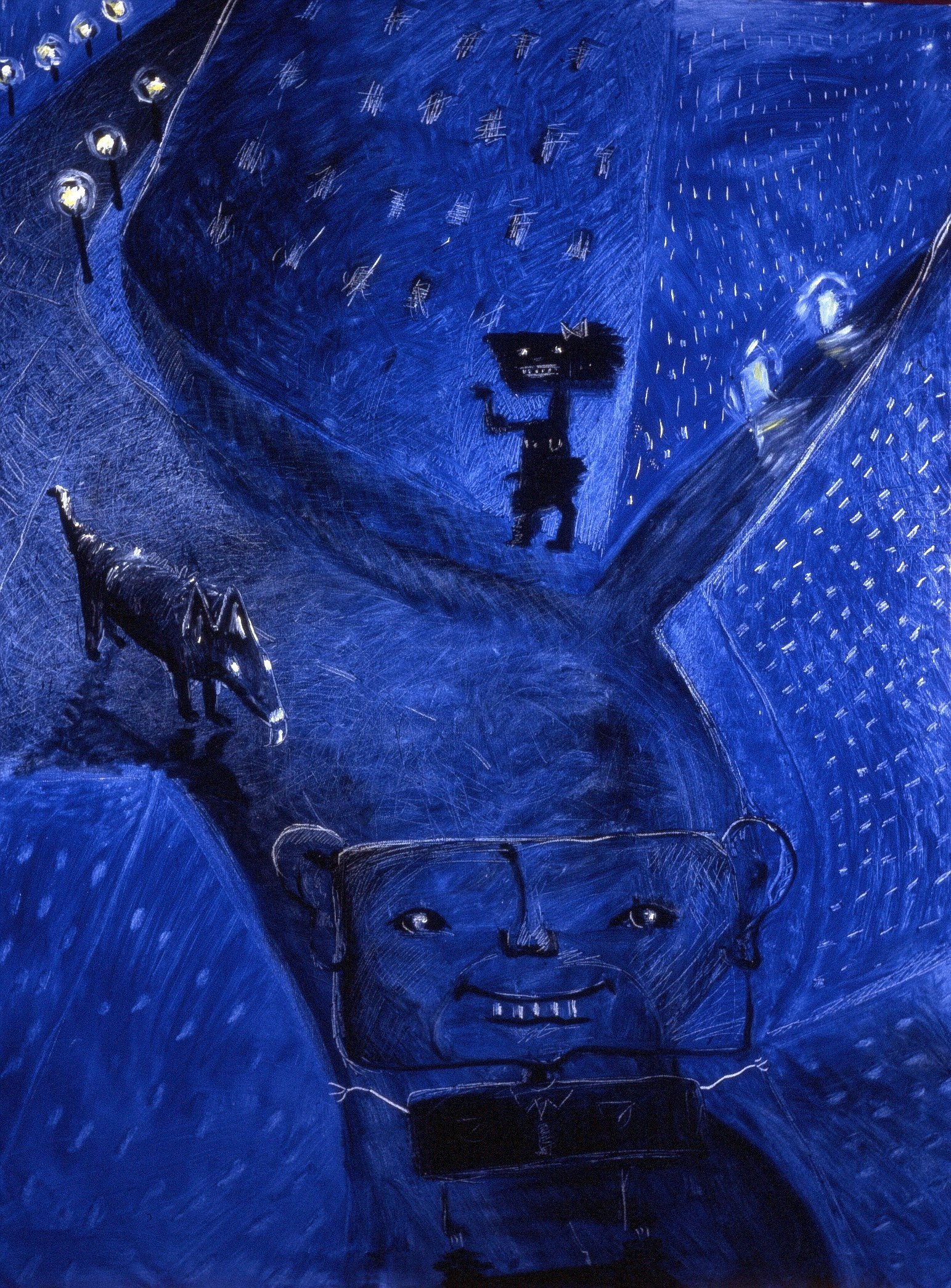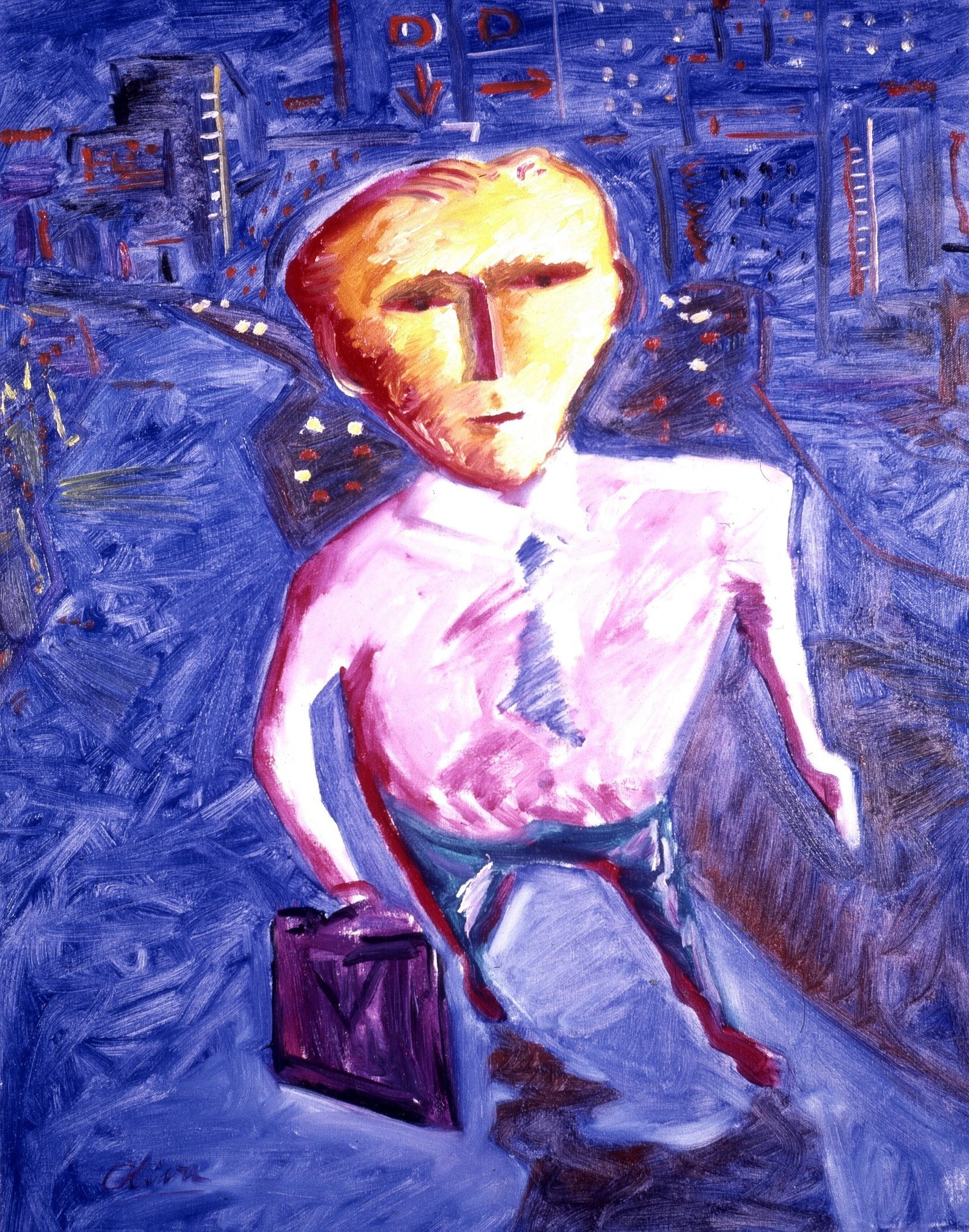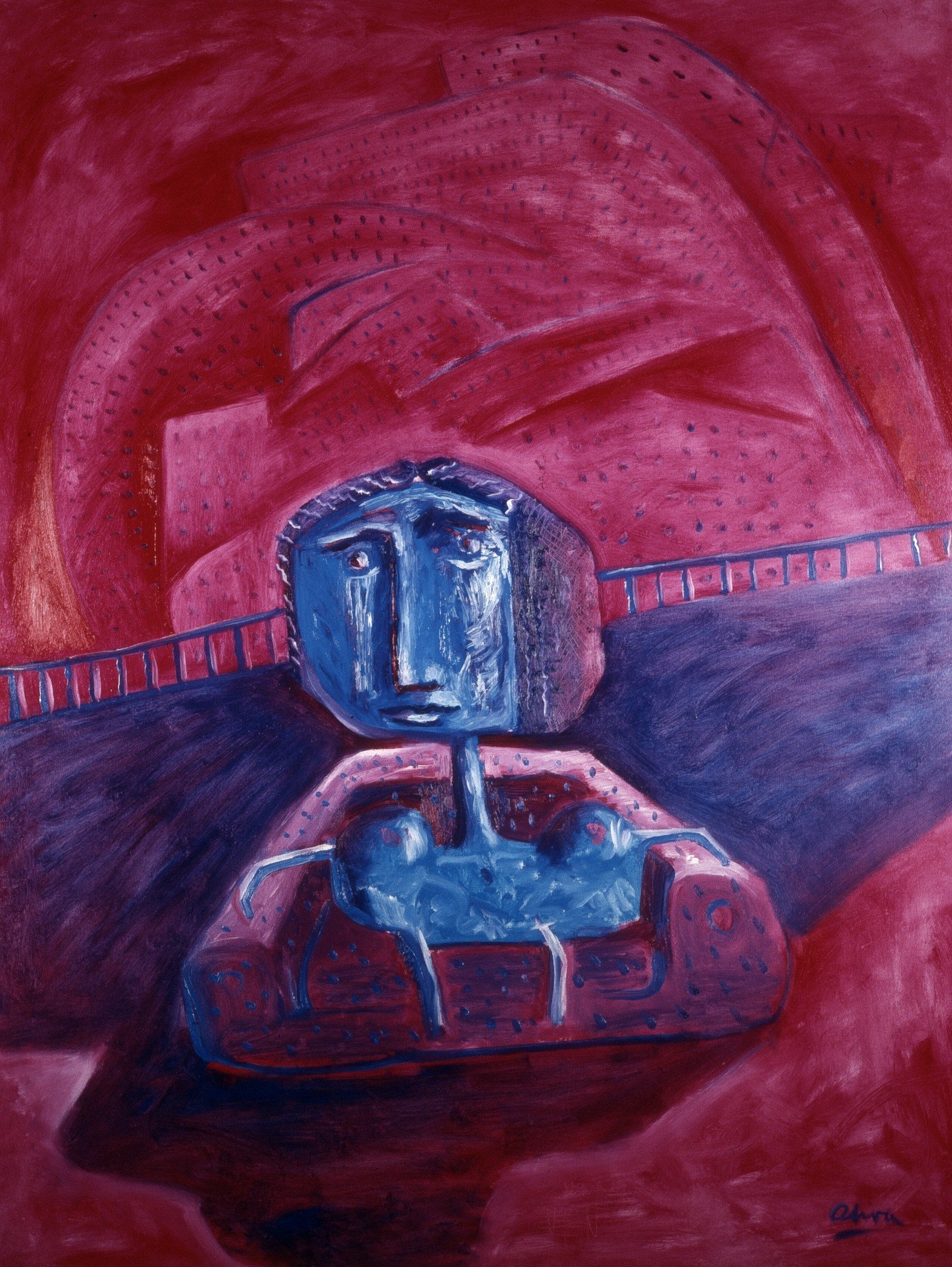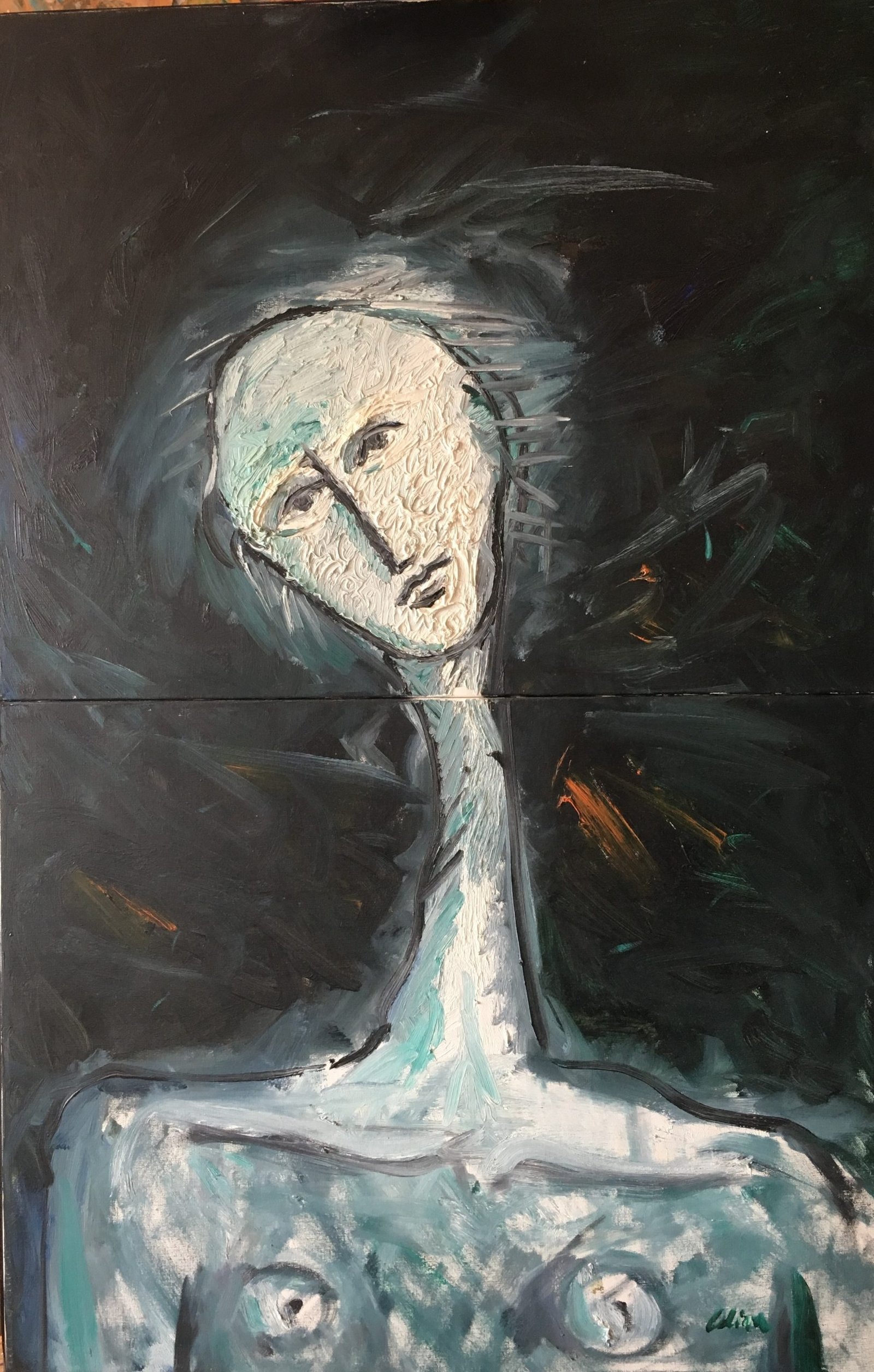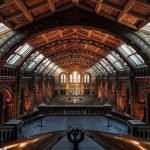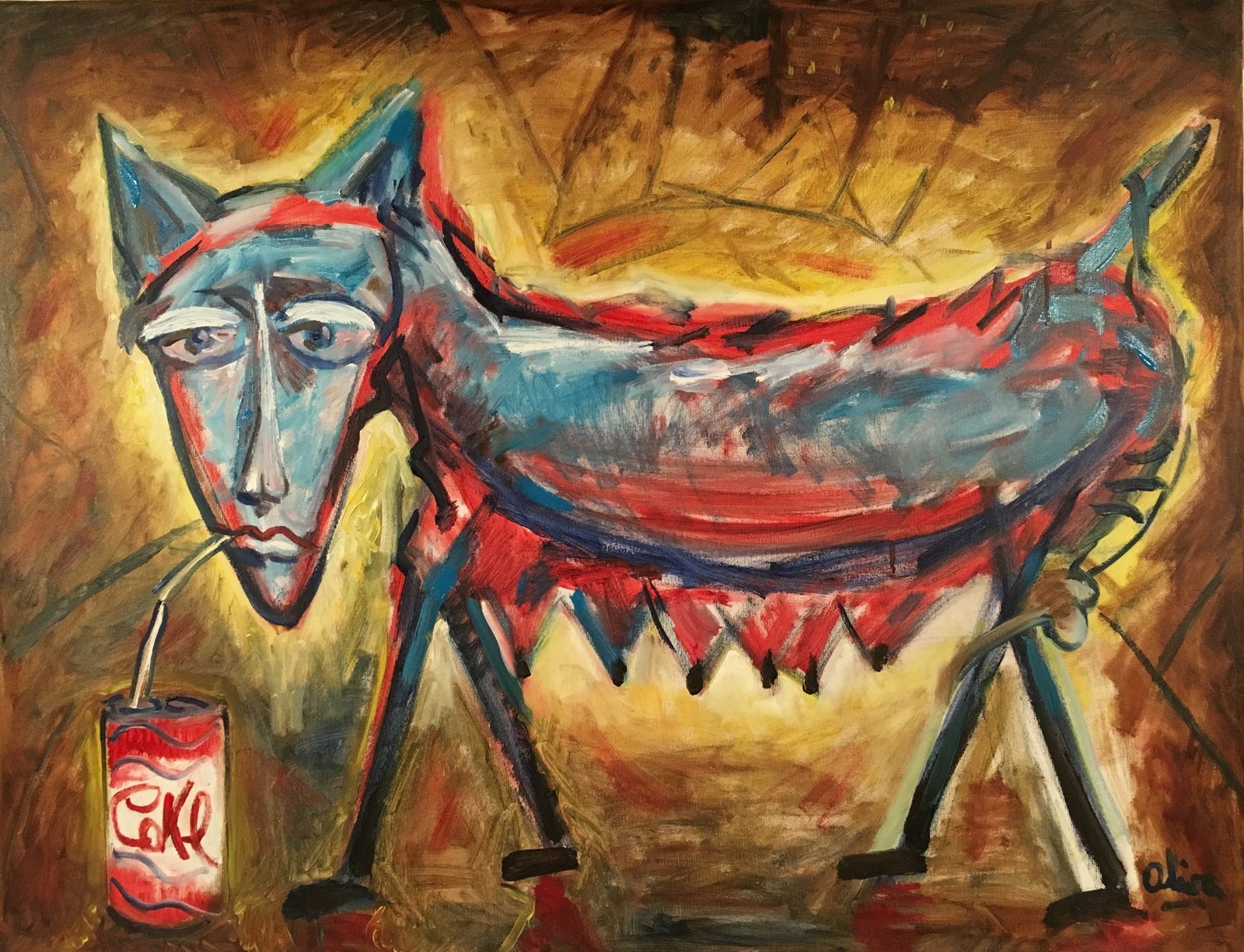
Oil on canvas, 80 x 70 cm.
Just as the Junge Wilde painters wished to express their individuality and vitality through their work, Cesare Oliva brought these influences to his art cycle in Montreal. In Canada, he was one of the few representatives of this movement that took hold worldwide.
The Junge Wilde movement, known for its break with previous artistic traditions and rebellion against formalism, inspired Oliva in his artistic journey. The works of Junge Wilde painters, with bright colors and energetic brushstrokes, had an obvious impact on his style, which created a unique link between the German movement and the Canadian art scene.
Berlin, politically divided during the 1980s, provided Oliva with a unique context to immerse herself in Junge Wilde’s creativity. The city, with its cultural and social encounters, profoundly influenced his artistic perspective, reflecting a desire to express new identities and ideas at a time of change.
The Junge Wilde movement represented a break with artistic traditions and a rebellion against the formalism and rigidity of conceptual and abstract art that had dominated earlier contemporary art. The young artists in this movement wished to express their individuality, spontaneity and vitality through their work.
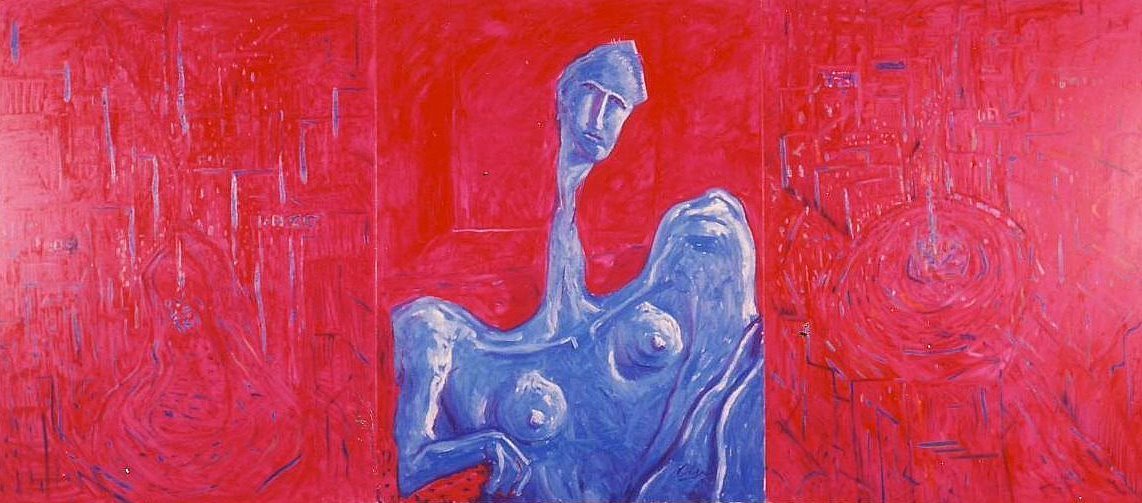
The works of Junge Wilde painters were often characterized by bright colors, energetic brushstrokes, and a mixture of styles that embraced neo-expressionism, surrealism, and pop art. Experimentation was a key component of this movement, and the artists were open to the use of new materials and techniques. Berlin, politically divided during much of the 1980s, provided a unique context for the development of Junge Wilde. The city was a place of cultural and social encounters, and the vibrancy of the art scene reflected a desire to express new identities and ideas at a time of change.

The “Junge Wilde” movement, which originated in Germany, was interpreted and translated in different ways in various European countries and the United States. Each nation adopted a term that reflected its unique interpretation of the movement. Here is what the movement was called or translated in the countries mentioned:
Italy: In Italy, the movement has often been known as "Nuova Pittura" or "Transavanguardia." These terms reflect the idea of a new direction in painting and avant-garde art.
France: In France, the movement may have been identified as “Nouvelle Figuration” or “Figuration Libre,” emphasizing the aspect of new figurative representation and stylistic freedom.
England: In England, it might have been called “New Image Painting” or simply “New Expressionism,” emphasizing the new approach and expression in the works.
Spain: In Spain, the movement may have been translated as “Nueva Figuración” or “Movida,” reflecting the new figurative representation and the cultural and social context of the time.
United States: In the United States, the movement may have been called “New Wild” or “Neo-Expressionism,” highlighting the element of wild spontaneity and the connection with expressionism.
